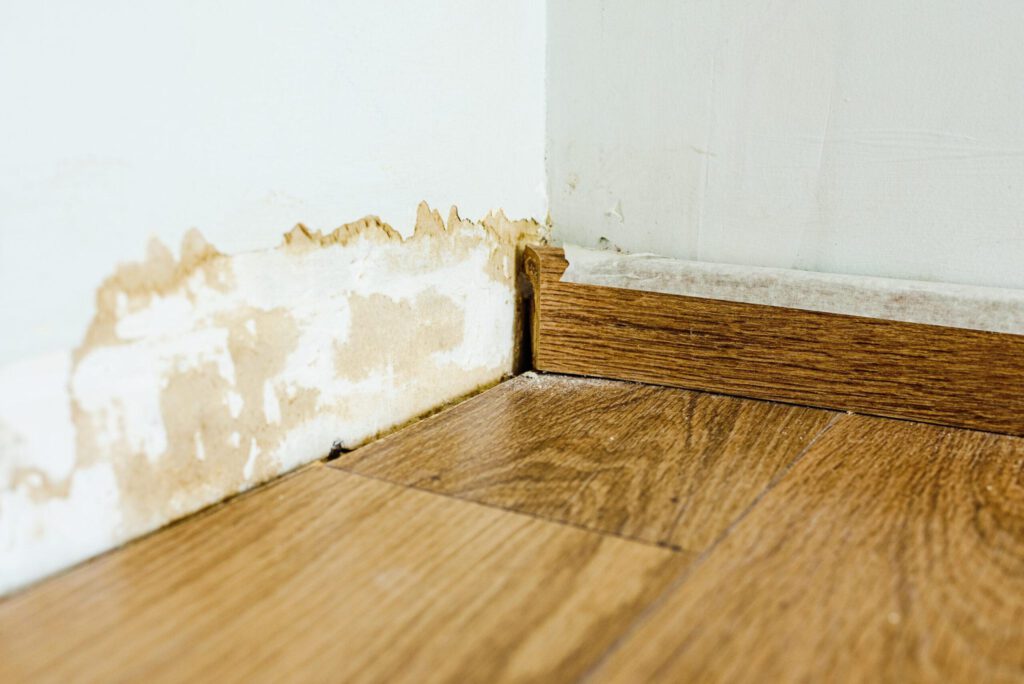Is your apartment safe from hidden health hazards like mold? Mold can grow undetected, causing serious health issues and property damage. Testing for mold is crucial to protect your well-being and prevent costly repairs. By learning how to test for mold in your apartment, you can take control of your living environment and ensure a healthier home.
Imagine living in an apartment free from the dangers of mold, where you and your loved ones can breathe easily. Regular mold testing empowers you to identify and address issues promptly, giving you peace of mind.
In this guide, we’ll walk you through the steps on how to test for mold in your apartment effectively. From identifying common signs to using the right tools and techniques, you’ll gain the knowledge to keep your home mold-free. Let’s get started on your journey to a healthier living space.
Signs of Mold Growth in Your Apartment
Visible Mold
The most obvious sign of mold growth in your apartment is the presence of visible mold. Keep a close eye out for any discoloration, patches, or fuzzy growth on surfaces throughout your living space. These visual cues can indicate an active mold problem that needs to be addressed.
Musty Odor
Mold has a distinct musty smell that can linger in the air. If you notice an unpleasant odor that persists even after thorough cleaning, it could be a sign of hidden mold growth within your apartment. Trust your nose as it can be an early warning system for potential mold issues.
Water Damage
Any past or current water damage, such as leaks, flooding, or excess moisture, can create the ideal conditions for mold to thrive. Carefully inspect areas affected by water, as these are prime locations for mold growth. Addressing water damage promptly can help prevent mold from taking hold.
Allergic Reactions
If you or anyone living in your apartment experiences unexplained allergic symptoms, such as sneezing, coughing, itchy eyes, or skin rashes, it could result from mold exposure. Pay attention to any patterns or correlations between these symptoms and time spent in your living space.
DIY Mold Testing Methods
Visual Inspection
Begin by thoroughly examining your apartment for any visible signs of mold. Check all moisture-prone areas, such as bathrooms, kitchens, and basements. Look for any discoloration, stains, or fuzzy growth on surfaces. This visual inspection can help you identify potential mold issues.
Tape Sampling
Clear adhesive tape is used to collect samples from suspicious areas. Press the sticky side of the tape against the surface and peel it off gently. Place the tape sample in a sealed plastic bag and label it with the location and date. This method can help identify the presence of mold spores.
Swab Sampling
If you have a specific area that appears to be heavily affected by mold, you can use a sterile swab to collect a sample. Rub the swab against the surface, ensuring that it comes into contact with the mold. Place the swab in a sterile container and label it accordingly. This method can provide a sample for further laboratory analysis.
Hiring a Professional Mold Inspector
Certification and Experience
Look for a mold inspector who is certified by a reputable organization and has extensive experience in the field. This ensures they have the expertise to handle mold testing and provide reliable results.
Reputation and References
Read reviews, ask for references, and check the inspector’s reputation in the industry. A reliable mold inspector will have a track record of satisfied clients and positive feedback.
Testing Methods
Inquire about the inspector’s testing methods. They should utilize a combination of air sampling, surface sampling, and moisture assessment to understand the mold situation comprehensively.
Detailed Reporting
Ensure that the mold inspector provides a detailed report of their findings, including the type of mold present, the extent of the problem, and recommended remediation measures. This information will help you take appropriate action.
Understanding Mold Testing Results
Once you have conducted mold testing, whether through DIY methods or with the help of a professional, you will receive results that indicate the presence, type, and concentration of mold in your apartment. It’s essential to comprehend these findings to guide informed decision-making.
Mold spores are normal in indoor environments, as they are naturally occurring. However, elevated levels of certain mold species can indicate a problem. The results will specify the type of mold identified and the concentration per cubic meter of air or per surface area. It is important to note that different mold species have different health risks, so consulting an expert or medical professional is advisable to determine the severity of the situation.
If the test results indicate a significant mold problem, immediate action is essential to prevent further damage and protect your health. Consult with a mold remediation specialist to develop an appropriate plan for removing the mold and addressing the underlying moisture or humidity issues.
Steps to Take if Mold is Present in Your Apartment
Notify Your Landlord
If you are renting your apartment, it’s crucial to inform your landlord or property management about the potential mold problem. They have a legal responsibility to address the issue promptly.
Document the Mold
Take photographs or videos of the suspected mold growth as evidence and keep a record of the situation. This documentation is valuable for potential future disputes.
Consult a Mold Remediation Specialist
Contact a reputable mold remediation specialist to assess the mold problem and develop an effective remediation plan. They will identify the source of moisture, remove the mold safely, and restore your apartment to a mold-free condition.
Communicate with Your Neighbors
If you live in an apartment building, it’s important to inform your neighbors about the mold issue. Mold can spread through shared ventilation systems, so addressing the problem collectively is essential.
Follow Prevention Measures
After the mold remediation process, it’s crucial to implement preventive measures to avoid future mold growth. This includes addressing any moisture or humidity issues, improving ventilation, and regularly inspecting your apartment for signs of mold.

Preventing Mold Growth in Your Apartment
Control Moisture
Mold thrives in damp environments, so keeping moisture under control is crucial. Promptly repair any leaks, use exhaust fans in bathrooms and kitchens, and ensure proper ventilation throughout your apartment. By addressing the root cause of moisture buildup, you can create an environment that is less conducive to mold growth.
Monitor Humidity Levels
Maintaining indoor humidity levels between 30% and 50% is essential for preventing mold. Use a hygrometer to monitor the humidity levels in your apartment regularly, and consider using a dehumidifier if necessary to keep the air dry and inhospitable for mold.
Proper Ventilation
Adequate airflow is key to preventing mold. Open windows regularly to allow fresh air to circulate, and use fans to improve air movement throughout your living space. This helps to reduce moisture buildup and create an environment that is less favorable for mold growth.
Regular Cleaning
Regularly maintain cleanliness and dryness on moisture-prone surfaces like bathroom tiles, shower curtains, and window sills. Use mold-inhibiting cleaners to prevent mold growth and keep your apartment clean and healthy.
Reduce Clutter
Keeping your apartment organized and free of clutter is also important for mold prevention. Cluttered areas can restrict airflow and create ideal conditions for mold growth, so make sure to maintain a tidy living space.
Mold Testing Safety Precautions
Wear Protective Gear
To prevent direct contact with mold spores and minimize inhalation, it’s essential to use personal protective equipment (PPE) when conducting mold testing. This includes wearing gloves, goggles, and a mask or respirator. Proper PPE will help safeguard your health and ensure a safe testing environment.
Ensure Proper Ventilation
Adequate ventilation is crucial when testing for mold in your apartment. Open windows or use fans to increase air circulation and reduce the concentration of mold spores in the air. This helps to minimize your exposure and prevent the spread of mold throughout your living space.
Contain the Testing Area
To prevent the spread of mold spores to other parts of your apartment, it’s important to seal off the area being tested. Use plastic sheets or tarps to create a containment barrier around the testing site. This will help to localize the mold and prevent it from contaminating other areas of your home.
Dispose of Samples Safely
If you collect mold samples during the testing process, it’s crucial to dispose of them properly. Seal the samples in a plastic bag and discard them in a sealed trash container. This ensures that the mold spores are contained and do not pose a risk to your health or the environment.
Common Misconceptions about Mold Testing
Visible Mold Means No Testing Needed
While visible mold is a clear indication of an issue, it may not provide a complete picture. Mold testing can help identify hidden mold and determine the extent of the problem.
DIY Testing is Always Sufficient
DIY mold testing methods can provide initial insights, but they may not be as accurate or comprehensive as professional testing. Professional mold inspectors have the expertise and equipment to provide a more thorough analysis.
All Mold is Dangerous
While certain mold species can pose health risks, not all molds are harmful. A professional mold inspector can identify the specific type of mold present and assess the associated risks.
Bleach Kills Mold
Bleach can temporarily remove visible mold, but it does not eliminate the underlying problem. Proper remediation is necessary to ensure complete removal and prevent future growth.
Conclusion
Ensuring the safety and health of your apartment requires diligent attention to potential mold growth. Identifying signs of mold, whether it’s a musty smell or visible discoloration on walls or ceilings, is crucial for early detection. You can take proactive steps like conducting DIY mold tests or seeking professional inspection services to assess the situation accurately. Once you have the test results, it’s important to act swiftly and appropriately if mold is found.
Addressing mold issues promptly helps prevent further damage to your apartment’s structure and, more importantly, protects your well-being. Preventive measures are vital in reducing mold growth risk in your living space. Simple actions like controlling indoor humidity levels, fixing leaks promptly, and ensuring proper ventilation can go a long way in mold prevention. By being proactive and following safety guidelines, you can maintain a mold-free environment in your apartment. Remember, early intervention and consistent maintenance are key factors in safeguarding your home from the harmful effects of mold.
For fast, affordable, and dependable mold testing services in Houston, TX, contact Mold Testing Houston. Our team of certified professionals will ensure an accurate assessment of your apartment and provide expert guidance in addressing any mold-related concerns.
Frequently Asked Questions
How long does mold testing take?
The mold testing duration depends on the apartment’s size and the extent of the testing required. The duration can vary from a few hours up to several days.
How much does professional mold testing cost?
The cost of professional mold testing varies depending on various factors, such as the size of the apartment, the number of samples needed, and the location. It is best to contact Mold Testing Houston for a personalized quote.
Can I remove the mold myself?
Small areas of mold can be cleaned by yourself, but proper safety precautions should be followed. However, for extensive mold growth or if you have health concerns, it is advisable to hire a professional mold remediation specialist.
Can mold testing make the mold problem worse?
A: Mold testing itself does not make the problem worse. However, if proper containment measures are not followed during testing, mold spores can spread to unaffected areas.
How often should I test for mold in my apartment?
Testing for mold in your apartment at least once a year is recommended, especially if you have experienced past moisture or mold issues. Regular testing helps in early detection and prevents extensive mold growth.






